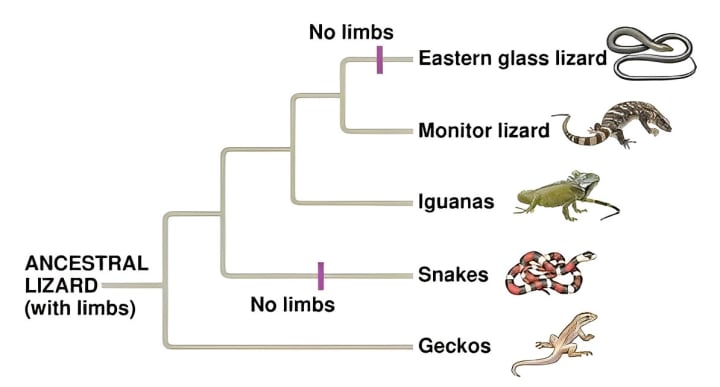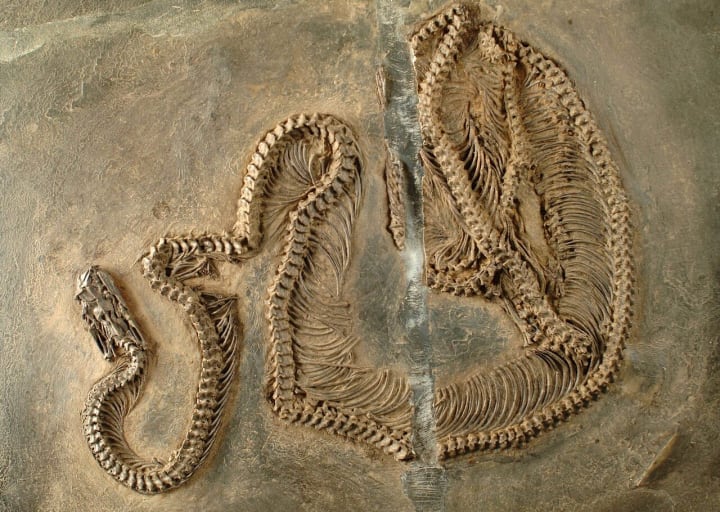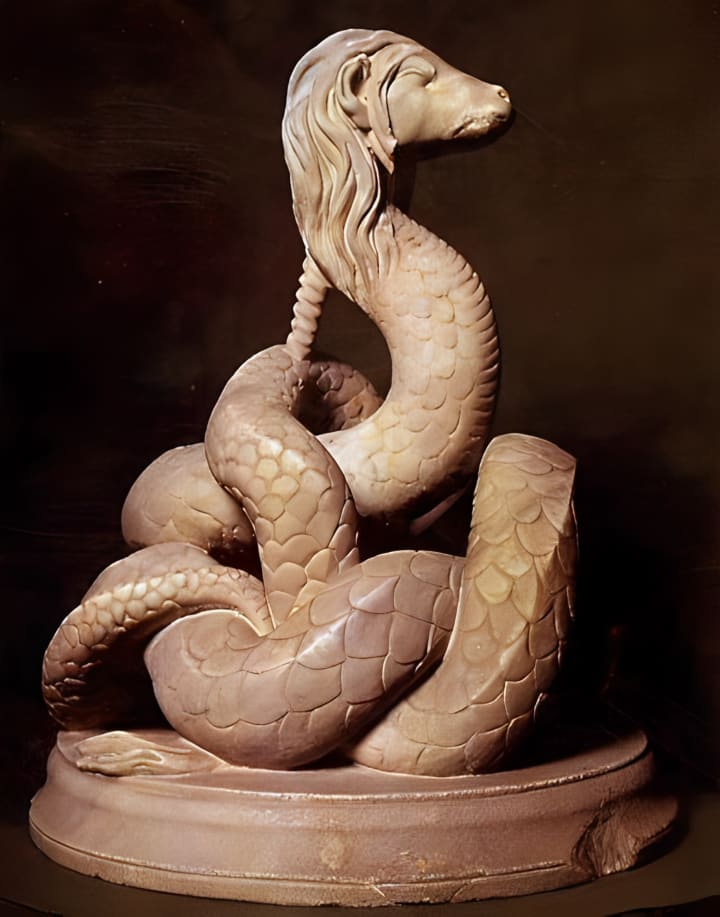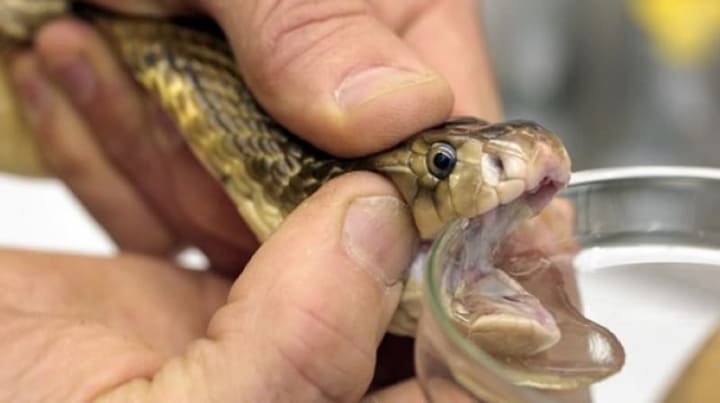History Of Snakes
Unraveling The Enigmatic Serpents

Introduction
Snakes are a diverse group of reptiles belonging to the suborder Serpentes. With over 3,600 known species, they inhabit nearly every corner of the world, from lush rainforests to arid deserts. Despite their diverse appearances and behaviors, all snakes share common characteristics such as elongated bodies, scales, and the absence of limbs.
Evolutionary Origins of Snakes

The evolutionary origins of snakes can be traced back to ancient lizards. Fossil evidence suggests that snakes evolved from terrestrial lizards over 100 million years ago. The transition from limbed reptiles to legless serpents was accompanied by numerous adaptations, including the elongation of the body, reduction in the size of limbs, and the development of specialized feeding mechanisms.
Ancient Snake Fossils

The study of ancient snake fossils has provided valuable insights into the evolutionary history of these enigmatic creatures. Fossils such as Najash rionegrina from Argentina and Coniophis precedens from North America have offered glimpses into the early stages of snake evolution. These fossils reveal primitive snake-like features combined with remnants of hind limbs, indicating the gradual loss of limbs over time.
Adaptations and Unique Features
Snakes have evolved a wide range of adaptations that have enabled them to thrive in diverse environments. Their unique features include highly flexible jaws, specialized venom delivery systems, heat-sensing pits, and a remarkable ability to swallow prey much larger than their head. These adaptations have contributed to their success as formidable predators and efficient hunters.
Snakes in Mythology and Symbolism
Throughout human history, snakes have held a significant place in mythology and symbolism. They are often associated with both positive and negative attributes, representing fertility, rebirth, healing, wisdom, and temptation. The snake's ability to shed its skin has been linked to concepts of transformation and renewal in various cultures worldwide.
Cultural Significance of Snakes
Snakes have been revered and feared in different cultures across the globe. In some societies, they are considered sacred and worshipped as deities, while in others, they are seen as omens of evil or deceit. The cultural significance of snakes is deeply rooted in ancient beliefs and folklore, which have been passed down through generations.
Snakes in Religion and Folklore
Snakes hold a prominent place in several religious traditions. In Hinduism, the snake god Nagas is revered as a symbol of fertility and protection. In Greek mythology, the serpent-like creature Python played a significant role in the legends surrounding the god Apollo. Similarly, snakes are featured in the creation stories and religious texts of many other cultures, reflecting their enduring influence.
Snakes in Ancient Civilizations

Ancient civilizations such as the Egyptians, Aztecs, and Mayans revered snakes and incorporated them into their art, architecture, and religious rituals. The coiled serpent motif, symbolizing regeneration and cosmic energy, adorned the temples and palaces of these civilizations. The respect and awe for snakes in ancient societies highlight their enduring impact on human culture.
Snakebites and Venomous Snakes
Snakebites have been a cause of concern throughout history. Venomous snakes, equipped with potent toxins, have posed threats to humans and other animals. However, it is essential to note that the majority of snake species are non-venomous and pose little to no danger to humans. Understanding snake behavior and proper first-aid measures are crucial in mitigating snakebite risks.
Modern Understanding of Snakes
Advancements in scientific research and technology have enhanced our understanding of snakes. Biologists and herpetologists study their behavior, anatomy, and ecological roles to gain insights into their conservation and management. The use of genetic techniques has allowed researchers to unravel the evolutionary relationships among different snake species, providing valuable information for their conservation.
Conservation and Threats to Snakes
Snakes face numerous threats in the modern world. Habitat loss, pollution, climate change, and illegal wildlife trade have led to the decline of snake populations worldwide. Conservation efforts are focused on protecting their habitats, raising awareness about their ecological importance, and combating the illegal trade of endangered snake species.
Snakes as Pets and in the Entertainment Industry
Snakes have become popular pets among reptile enthusiasts. However, owning a snake as a pet requires responsible ownership and adherence to appropriate care guidelines. Furthermore, snakes have also found a place in the entertainment industry, captivating audiences through snake charmers, snake-handling acts, and their presence in movies and documentaries.
Snakes in Medical Research

Snake venoms have become valuable resources in medical research. The toxins produced by venomous snakes have properties that can be harnessed for the development of antivenoms, painkillers, and drugs for various medical conditions. Studying snake venom has also contributed to our understanding of human physiology and the development of new treatment modalities.
Snakes in Literature, Art, and Popular Culture
Snakes have left an indelible mark on literature, art, and popular culture. They have been featured in countless books, paintings, sculptures, and songs, symbolizing various themes such as temptation, power, and transformation. Snakes continue to captivate audiences in movies, TV shows, and video games, showcasing their enduring appeal as intriguing and mysterious creatures.
Conclusion
The history of snakes is a tapestry woven through time, reflecting their evolutionary journey, cultural significance, and intricate relationships with humans. From ancient myths and religious symbolism to their role in modern research and popular culture, snakes continue to evoke awe and fascination. By understanding and appreciating their history, we can strive to conserve these enigmatic serpents and coexist with them harmoniously.
About the Creator
Enjoyed the story? Support the Creator.
Subscribe for free to receive all their stories in your feed. You could also pledge your support or give them a one-off tip, letting them know you appreciate their work.






Comments
There are no comments for this story
Be the first to respond and start the conversation.